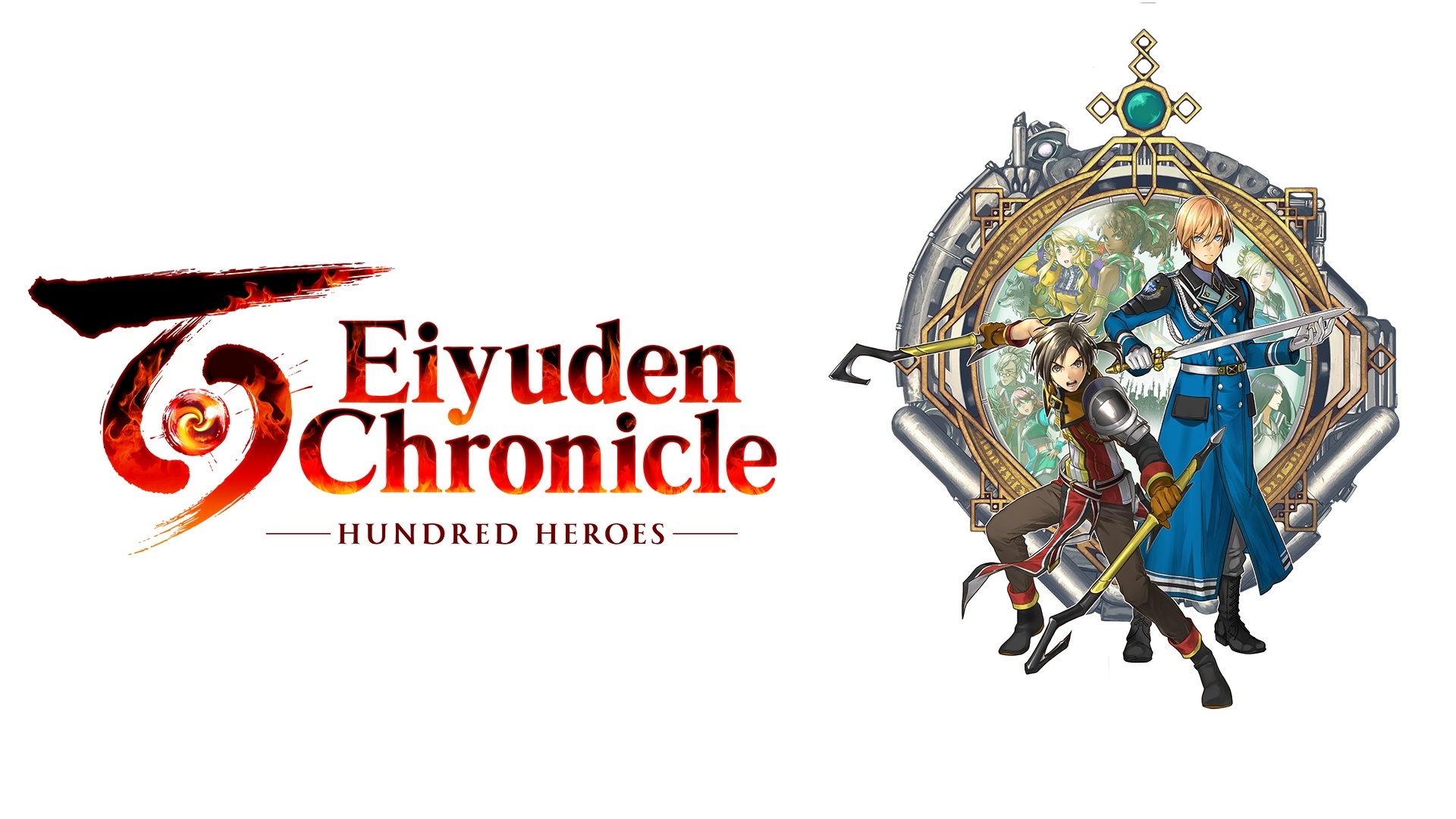Gaming
Eiyuden Chronicle: Hundred Heroes Review

Eiyuden Chronicle: Hundred Heroes is the spiritual successor to Konami’s celebrated Suikoden series, a beloved JRPG franchise spanning over seven entries, including five mainline games and two spin-offs (one never localized in the West). Developed by Rabbit and Bear Studios, the team aimed to create a love letter to the JRPG genre, filled with the iconic quirks and design philosophies one would expect from a mid-to-late 90s JRPG.
Funded as Kickstarter’s #1 project of 2020, Eiyuden Chronicle: Hundred Heroes entered development with immense hype and expectations. The goal was to revive an era of JRPG greatness many believed had passed. With the passing of series creator Yoshitaka Murayama, many wondered if the game could live up to its lofty ambitions and serve as a fitting final legacy.
Is Eiyuden Chronicle: Hundred Heroes a worthy successor to Suikoden? Does it honor Murayama’s vision? Or is this a Kickstarter dud? Find out in our Eiyuden Chronicle: Hundred Heroes review!
This is a review coupled with a supplemental video review. You can watch the video review or read the full review of the below:
Eiyuden Chronicle: Hundred Heroes
Developer: Rabbit & Bear Studios
Publisher: 505 Games
Platforms: Windows PC, Nintendo Switch, Xbox One, Xbox Series X|S, PlayStation 4, PlayStation 5 (reviewed)
Release Date: April 23, 2024
Price: $49.99 USD
The first JRPG I ever experienced was the original Suikoden. A friend came over and spontaneously popped it into my PlayStation. I was only eight years old and had no point of reference to compare this game to, other than possibly Super Mario RPG on the SNES or the original Pokemon.
Once the game began, my mind couldn’t fathom how mind-blowing it was to see all these different, uniquely designed heroes fighting with swords, staves, axes, and magic. Having a party of six characters was the most impressive aspect for me. Once I saw a battle play out, it immediately hooked me on the possibilities of what a turn-based RPG could be.
The character sprite work was charming, and it was fun to see how their animations played out, especially during a “unite attack”. JRPGs became my favorite genre from that moment on. This path has led me to explain my time and experience with the game that aims to be its successor.
As the game opens up in the first town, a symbolic scene unfolds: a large bird attempts to capture a smaller one. This sets the player on notice that no challenge is too big, even when hope seems lost. It foreshadows the idea that even the underdog can prevail.
We then meet Nowa, a young and eager fighter, who wields two uniquely shaped swords that resemble hooks. Nowa’s journey immediately “hooks” the player’s attention as he wastes no time joining “the watch,” a sort of city mercenary guild that helps people in need with small tasks, typically involving monster culling or escorting travelers.
While not the most inspiring way to begin a JRPG protagonist’s story, it serves as a stepping stone for Nowa to eventually acquire a town or castle, allowing him to manage the many recruits that are central to the expected Suikoden-like experience.
Enlisted in the watch, Nowa’s first mission has him meet Seign Kessling of the imperial army. This seemingly small escort mission will soon explode into a quirky, character-filled adventure of discovery, liberation, and everything one would expect from a Suikoden-like game. Though the opening mission itself isn’t as intense as the series favorite Suikoden II, it sets the stage for the inevitable political turmoil to come
Commencing the first act, the player takes control of six heroes. While the number seems substantial, the combat options initially feel somewhat underwhelming. As the game progresses, new features are introduced, but none will be unfamiliar to Suikoden veterans.
The weapon upgrade system remains virtually identical: pay a small fee that increases with each subsequent upgrade. Higher upgrade caps become available in more towns as the story progresses, but reaching the highest cap requires special items similar to the hammer key items from Suikoden IV.
The rune system, now called the “rune/lens” system, feels like a welcome improvement. Each character has a unique Lens with multiple slots for a variety of rune categories. This allows for a more enjoyable tinkering experience when creating builds for the 100+ recruitable characters.
You can experiment with both the hard-coded runes some characters possess (like Nowa’s thrilling 8-fold attack rune Swinging Slash) and the many equippable ones. Unite Attacks also return, but unlike Suikoden III, they don’t upgrade to higher levels through repeated use.
A system I find myself wishing for in Eiyuden Chronicle is the skill proficiency system from Suikoden III. This extra build system would not only give players a better understanding of how characters operate but also what stats and combat capabilities to focus on. It would further enhance the micromanagement and theory-crafting aspects that JRPG fans love. While Eiyuden Chronicle lacks this feature, the improved rune system is a welcome addition compared to its predecessor.
The combat system shares similarities, but with new additions that add variety to the battles. One such feature is the ironically named “gimmick” system. This system means that certain boss battles have a special command that can turn the tide in your favor, or against you if you’re not careful.
For example, one boss fight involves a giant crane that drops massive ball bearings on a third of your party. Failure to utilize the “gimmick” command effectively will cause the ball to fall and damage your heroes. However, with proper timing within the turn queue system, you can command the crane to move over the boss instead, causing them to take the damage.
Many bosses have a variation of this feature, but in some cases, the hints are unclear and can feel random. For instance, another boss encounter involves a magical beast that submerges into the sand, giving you a fifty-fifty chance of selecting the right spot to attack. There were no clear hints in this encounter. If there were, they were difficult to understand, resulting in a confusing experience with the gimmick mechanic. When the hints are clear, it’s very satisfying to outsmart the boss!
-

 Destination8 months ago
Destination8 months agoSingapore Airlines CEO set to join board of Air India, BA News, BA
-

 Breaking News10 months ago
Breaking News10 months agoCroatia to reintroduce compulsory military draft as regional tensions soar
-

 Gadgets3 months ago
Gadgets3 months agoSupernatural Season 16 Revival News, Cast, Plot and Release Date
-

 Tech News12 months ago
Tech News12 months agoBangladeshi police agents accused of selling citizens’ personal information on Telegram
-

 Productivity11 months ago
Productivity11 months agoHow Your Contact Center Can Become A Customer Engagement Center
-

 Gadgets3 weeks ago
Gadgets3 weeks agoFallout Season 2 Potential Release Date, Cast, Plot and News
-

 Breaking News10 months ago
Breaking News10 months agoBangladesh crisis: Refaat Ahmed sworn in as Bangladesh’s new chief justice
-

 Toys12 months ago
Toys12 months ago15 of the Best Trike & Tricycles Mums Recommend





















